A client wants to use my tuners for a nylon string project. This is very exciting, and I think it will work extremely well considering the low weight and the resonance of the material.
The problem: the action of the tuner is not enough to pull the string to the required tension. Finger tightening the nylon string and then locking it with the standard string lock leaves the string almost an octave low when the full action of the tuner has been used.
The solution: a “coarse tuner”. All we need is a quick way of bringing the string up to a reasonable pitch and then fine tune it the normal way. I went through a lot of deliberations before coming up with a design that fits into the elegant, pared down approach of the EGS system. One challenge was coming up with a way to fasten the tuner in the instrument in a non-obtrusive way. Another was achieving a one-hand action (which I only partially arrived at a solution for…). The final challenge was coming up with a good, easy to manufacture, way to allow turning the tuner to sufficient tension – with an allen key, a screw drive, a coin or fingers. The chosen solution uses an allen key since this is part of most guitarists’ cases anyway.
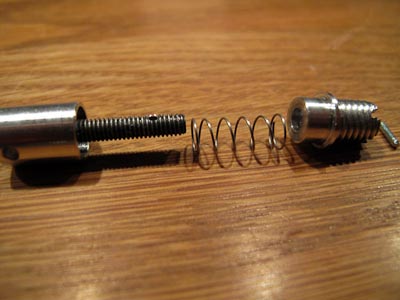
The prototype uses a regular screw as the basis, and the housing that can be seen to the left is threaded on to it. A real implementation would likely be cut from a single piece of aluminium.
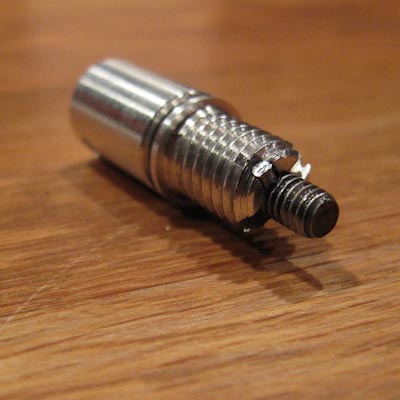
The assembled tuner. The post turns freely when it is pressed down. It locks into the grooves when released. As you can see, it has four positions. This is more than enough to achieve the action that is required.
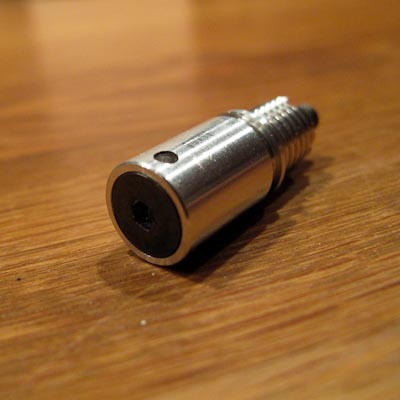

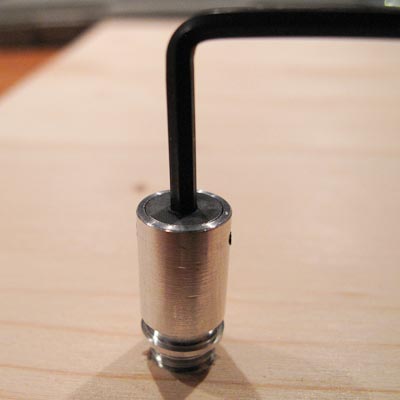
So – how do to fasten it onto the guitar? The prototype has a regular M8 thread. The production version would have a self-cutting thread more suitable for wood. My lab plate, I drilled a 6.5 mm hole into and then used a tap to actually cut M8 threads into the wood. It is very easy to fasten it, by turning clock-wise. The “ledge” stops it from digging into the wood too much.
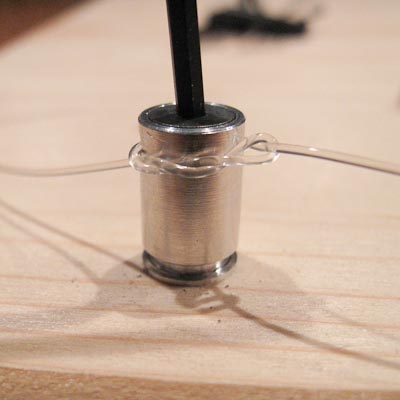
Thread the string through the post, just like a normal tuner. Then _press_ down on the allen key and turn counter-clock-wise to tighten the string. The direction is important – this will make the tuner lock itself even tighter into the wood. If you were to tighten the string by a clock-wise motion, the tension would un-wind it…
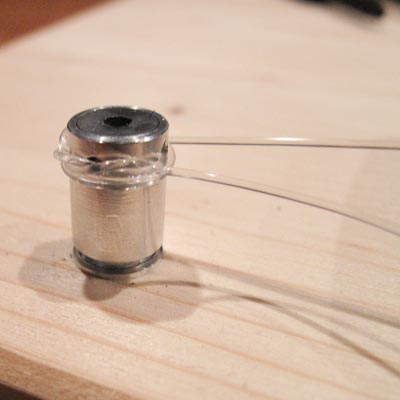
The tightened string. The way it turned out, the spring is not powerful enough to let the lock “pop” into place. This is an effect of using a screw as the basis, and the friction it causes against the housing. The final version should be smoother and when lubricated, it should slide up and down more easily. Now, I had to pull on the housing with one hand to make it lock while the other hand held it tightened.
I could very quickly pull this B string up to a G# and then fine-tune using the regular tuner up to B. I also tried an A string that I pulled up to F# and tuned to A. Now – off to beta test with the client and hope it falls out well!




By the way… One design issue is not taken care of currently. If a number of these were fastened facing upwards on a regular head and put into a soft case, it would be easy to accidentally hit them to unlock and de-tune the instrument. I have a solution that I will try out in the near future.
That looks tremendously useful. Also for use with a fine-tuning bridge such as the Schaller 456, as e.g. here:
http://projectguitar.ibforums.com/index.php?showtopic=10984
In that particular design, the rough tuning is done by pulling the strings and fixing them in a locking nut. Your coarse tuners seem like a much more reliant and elegant solution.
/Alex
Hi, Congrats for the great job. I’m mailing from the other side of the world (Mauritius) and have always wondered how I could build headless tuners for a nylon string instrument like an electric concert uke. I’ve got a couple of questions if you don’t mind.
1. Does the central post have to be threaded? No imho , unless I’ve missed something.
2. How do you achieve the fine tuning for nylon strings?
Thanks again for sharing.
Keep it up.
Eric Hoodman
Hi Eric,
thanks for your post. You are correct that the post does not have to be threaded. I simply started from a screw to get the insex (Allen) key hole on the top for this prototype. The intent is to do the fine tuning with my regular EGS combined bridges/tuners/tailpieces. The action of them is ample for steel strings, but not enough for nylon.
Actually, chances are that for an uke, the action of the tuners might be enough, since the scale length is shorter. Having said that, one would not want to rely on having to pre-tension the strings, etc.
Don’t hesitate to ask more questions.
Cheers,
Ola
Hi Ola,
Thanks a lot for your feedback.
In fact your invention is so well-thought that a little refinement (e.g. 6 or 8 positions instead of 4) would eliminate the use of fine-tuning for a concert uke. You were right, the housing and post can be made out of a single piece of aluminium. A stronger spring coupled with a movable ring (or partial washer or gasket) can be designed to avoid accidental detuning.
I will keep you posted.
Thanks again for this simple, elegant method of tuning that won’t cost an arm.
Cheers
Eric